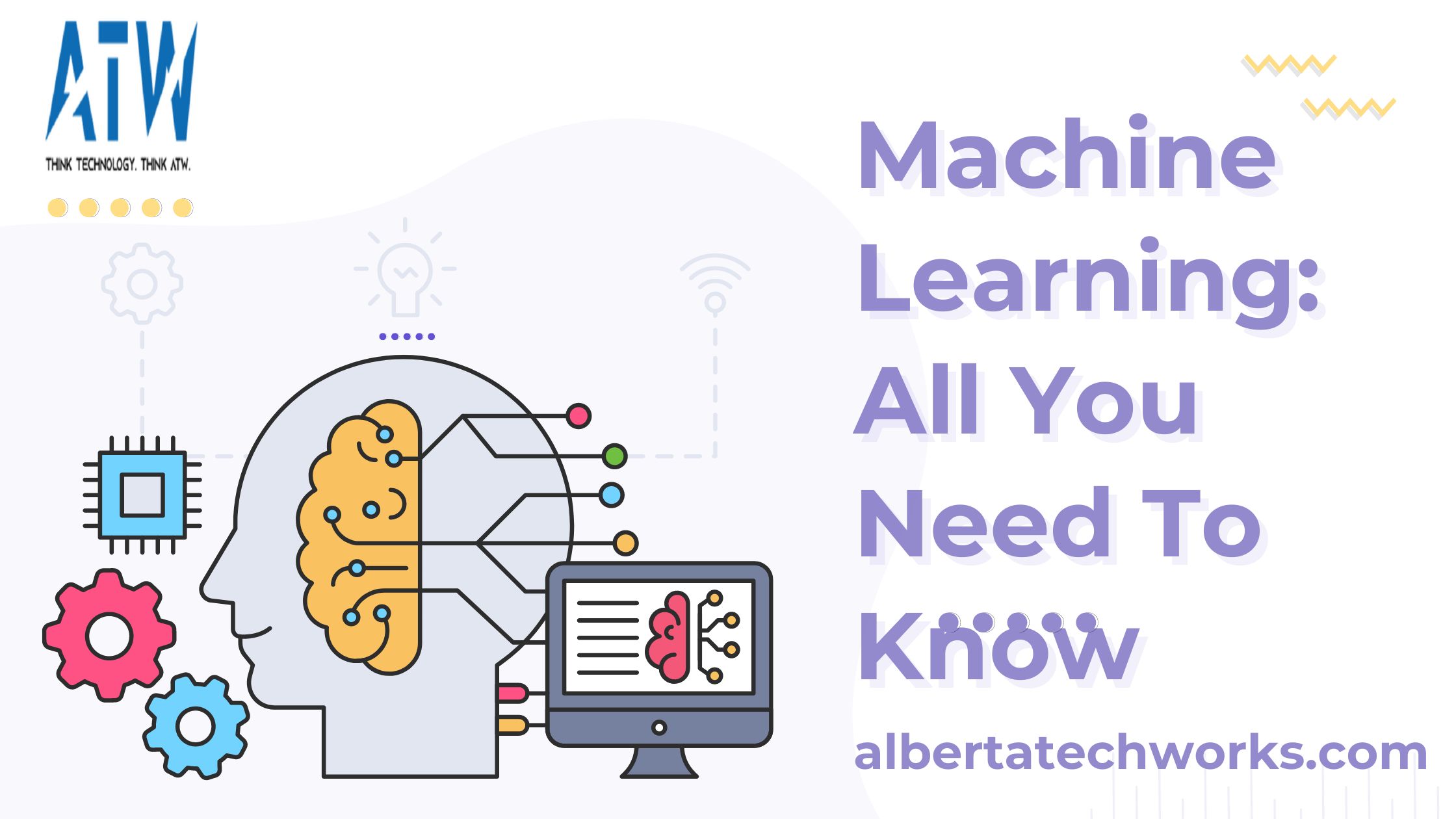Machine learning is the newest buzzword in the world of technology and is one of the most exciting subcategories of Artificial Intelligence(AI). Once considered a fanciful concept found in science fiction, AI is becoming an everyday reality. Computers are not only replacing manual labor but also increasingly replacing mental labor. However, you might be new to the concept of machine learning but are already using it in your daily life. Machine learning is everywhere, from playing chess online to using speech and face recognition technologies. To better harness machine learning technology, you need to know its basics. This article aims to walk you through the fundamentals of machine learning and its various applications. Hence, read on to learn in detail about machine learning.
What is Machine Learning?
Machine learning is a subcategory of Artificial Intelligence. As the name suggests, machine learning allows machines to be transformed into thinking devices. Like the human brain, machines can learn from experiences (input data) and improve themselves without being explicitly programmed, reducing the need for human intervention.
There are four types of machine learning, which are as follows –
- Supervised
- Unsupervised
- Semi-supervised
- Reinforcement
What are the Basic Terms Associated with Machine Learning?
The basic terms associated with machine learning are as follows –
1. Clustering
This term is associated with unsupervised learning (i.e., learning with unlabelled data) and involves grouping or forming a cluster of data points based on attributes and features.
2. Machine Vision
Machine vision, also known as computer vision, is the process whereby machines can capture images and analyze them. For example, it is used for detecting skin cancer from X-ray images and detecting vehicle types and real-time traffic for self-driving cars.
3. Deep Learning
It is a category of machine learning algorithm that works like a human brain. These networks interpret big data that is either structured or unstructured and then recognize patterns. Big Data refers to data that is so large that it doesn’t fit in one computer. The more data these networks can learn from, the more accurate and informed their decisions are.
4. Regression
It falls under the category of supervised learning (i.e., learning with labeled data) and is used to predict values that differ from the “yes” or “no” label. It indicates a value that falls somewhere within a continuous spectrum. Regression systems can be used to predict answers to questions such as “How many” or “How much?”
Why is There a Need for Machine Learning?
With each passing day, machine learning is growing in importance. This growth in the need for machine learning can be attributed to the following three factors –
- The ever-increasing volume and variety of data
- The easy availability and access to computational power
- And high-speed internet availability
All of these factors are making it increasingly possible for one to quickly build models that can almost accurately and promptly analyze complex and vast chunks of data, which is not feasible for the human mind alone.
Machine learning can be used extensively to improve the overall quality of human life by developing models which can be used for speech and face recognition, detecting cybersecurity threats, healthcare, finance, building self-driven cars, and so on.
It has tremendously impacted the customer care industry. The virtual assistant solutions developed by machine learning have automated many tasks, such as account balance checking and password changing, thus eliminating the need for a human agent and saving time.
Stages of Machine Learning?
To help you understand the process of imparting intelligence to machines in simple terms, let’s break down the cycle into seven key steps, which are as follows –
1. Data Collection
Initially, you have to feed data into the machine per your project. Since the quality of the input data decides the outcomes/predictions of the model, ensure to provide only relevant and correct data from reliable sources. Data can be collected from various sources – interviews, surveys, focus groups, research, user data and internal usage. Good data has the least number of repeated and missing values is relevant and fairly represents the various classes/subcategories present.
2. Data Preparation
Once you have collected the relevant data, you need to prepare it. This stage is usually labor intensive and most time-taking. Data preparation can be done by:
- Randomly put together all the collected data to guarantee that the data is evenly distributed.
- Eliminate unwanted data, duplicate and missing values, and rows and columns from the collected data. You might also require to change the rows and columns or their index and reorganize the dataset.
- Visualize the collected data to understand its structure and recognize the relationship between different classes and variables.
- Categorize the cleaned data into a testing set and a training set. The training set is the one from which your model learns. As the name suggests, the testing set tests the model’s accuracy after training.
3. Model Choosing
Choose a model as per your task. Various models have been developed, each suited for a specific task such as image recognition, prediction and speech recognition. You also must ensure whether the chosen model is suitable for categorical or numerical data.
4. Model Training
Model training is regarded as the bulk of machine learning. In this step, the model is trained to increase its ability to predict based on the accumulated data. This can be compared to someone learning a bicycle for the first time. Gradually with time, the rider becomes a pro in the art of cycling. It takes a lot of practice, correction of mistakes, and failed attempts. Similarly, the model reaches the desired accuracy level in its predictions over time and with training.
5. Model evaluation
Once the model has been trained, you need to test its performance. Here, the previously separated testing set of data is put to use. This way, you can evaluate the efficiency and speed of your model.
6. Parameter Tuning
Now that you have trained and evaluated your model, you can increase the accuracy of your model by tuning the parameters(variables) installed in your model. At a specific parameter, the model’s accuracy will be the highest.
7. Prediction Making
It is the stage in which the model is ready for practical application. The model is now independent of human intervention and can predict based on training.
How Does Machine Learning Work?
Whenever we are required to make a decision, we reflect on our past experiences to better analyze and assess the present situation. In this manner, human beings continually learn and improve. Similar is the case with machine learning.
Now, let’s discuss briefly how machine learning works –
- Firstly, data is prepared to be fed into the machine, which involves cleaning the data of all unwanted information and missing and duplicate values. Moreover, this data is selected as per the project type.
- After data preparation, a model suitable to the project type is chosen.
- Then the prepared data is fed into the machine, and the machine is trained, which increases its ability to make predictions based on the accumulated data.
- Once the model has been trained, its prediction capability is put to the test for evaluation.
- Next, to increase the accuracy of the machine, parameters(variables) are tuned.
- Now, the model is ready for practical application.
- Machine learning relies on pure math or logical reasoning. Each of the machine learning algorithms is built around a modifiable mathematical function.
What are the Various Applications of Machine Learning?
The various applications of machine learning are as follows –
1. Virtual Personal Assistant
Virtual personal assistants such as Google Assistant, Cortana, and Alexa use machine learning algorithms.
2. Product Recommendations
Whenever you search for a product online on Amazon, Flipkart, or Netflix, you start seeing advertisements for the same product or come across some product recommendations while surfing the internet using the same browser. It is because of machine learning algorithms.
3. Self-driving cars
One of the incredible machine learning examples is Tesla’s self-driving cars.
4. Email Spam
Email is sent to the inbox or spam box whenever you receive an email. The application of machine learning technology does this.
5. Online Fraud Detection
Machine learning is used to secure our online transactions by detecting fraudulent transactions. Whenever you perform an online transaction, the machine learning model conducts a thorough analysis of your profile and tries to detect suspicious patterns.
Conclusion
Marketwatch has predicted that the machine learning industry will grow at a rate of 45.% between 2017-2025. Naturally, this makes it imperative for everyone to learn some basics of machine learning, and this article has tried to do that.
If you still have doubts about machine learning, stay tuned to the Alberta Tech Works blog!


